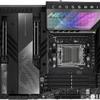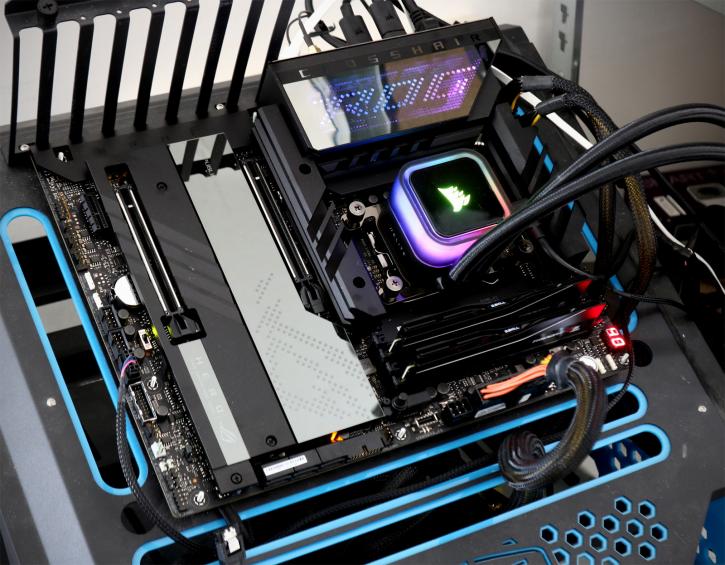Words & Conclusion
Final Words
Honestly, X670E is going to be a difficult thing to sell. I mean don't get me wrong, the motherboard is excellent but it's priced at a level that makes me want to vomit, 809 EUR including taxes of ~20% When talking to ASUS about this they agreed that pricing is very difficult and they're working on getting that down a little. But even at, 700 EUR you need to wonder where the hell that amount of money is based on. If you ask me, you're looking at something that should cost 300 EUR. Apparently, the PC component DIY industry doesn't understand it's killing its own business. Honestly, a B650 motherboard will provide you with proper performance (as good as X670E) and plenty of features, and it will undoubtedly be way less expensive than any X670(E) motherboard available. The main (B650) distinction is the lack of PCIe Gen 5.0 on the PCIe Slits, a slew of USB 3.2 connectivity and perhaps 10 GigE LAN. These are the most significant changes, aside from an excellent VRM designs.
Performance
We utilized a DDR5 6000 CL30 kit for this review (slightly crisper timing than the usual CL40). If you read our memory scaling article, it's almost annoying to see how close performance is compared to a DDR5 5200 MHz CL40 configuration). What a fun motherboard for the money, though! A lot can be said and stated about X670(E) versus B650(E), but for a B series motherboard, you'll get plenty of features as long as you do not plan to tweak your processor with, say, subzero cooling. The HERO has a sophisticated power phase design, you could add in a Ryzen 7 7950X processor just as well and be done with it. So what will you be lacking compared to B650 then? Well, on some level tweaking support, most manufacturers will drop PCIe 5.0 support in favor of PCIe 4.0. So really, even with B650, you're 95% there for all your common needs and requirements. I mean sure, PCIe 5.0 M2 slots and multi-gig Ethernet links are nice, but do you really need it?
Energy efficiency
Added chips, RGB, and BIOS configuration are a bothersome factor when testing stuff like this. The motherboard Ryzen 7000 performs a little out of the scope of our normal realm. Expect a 70-80 Watts power draw in IDLE. Under total stress on the processors, the system comes back at roughly 225-250 Watts. Energy efficiency for this motherboard and processors as such are average at best. Keep that in mind with your cooling choice, as processor wattage usually is 1:1 in line with cooling performance. For any Ryzen 7000 series processor, recommend a proper LCS (all in one liquid cooling kit)
The conclusion
It's not that we don't like this HERO, it's just that it's too expensive. Combine that with the Ryzen 7000 heat levels and we doubt that this is an attractive platform to own? Hardware wise this puppy is excellent, we had no stability issues, WIFI6 is blazing fast, the 2.5 GigE LAN jack performs well, it has a strong VRM design with 105 A Power Stages and loads of connectivity in the form of M2, SATA and USB. It easily is one of my favorite motherboards if it weren't 809 EUR. With 18+2 power phases for the CPU there are no issues with processor support either, including the power subsystem's temperature. Whilst DDR4 memory is currently substantially less expensive than DDR5 memory; with a frequency of 5200 and timings of CL40 or lower you'll be there 99% also (compared over premium 6000 MHz kits). Let me also add that this motherboard comes with WIFI 6E compatibility (6 GHz band), so you're future-proof until WIFI7 arrives also. ASUS did not provide pricing information in advance of the release, the German press release revealed the 800 EUR price, while price watch engines are already listing this product at 700 EUR. of course there will be cheaper alternatives that share many of the X670E HERO features. It is safe to say that this is not a product for the casual gamer or user, it is targeted squarely at well-heeled computer hobbyists. Conservative spenders should dismiss this as a viable option. The cheapest solution in the X670 range will be the PRIME X670-P, but even the cheapest one would cost well over 325 EUR (!). ASUS has packed the Crosshair HERO full of high-speed connectivity, with a massive VRM that is just overengineered in every way. In that regard the motherboard is ahead of its competitors. This is the perfect prospect for those who already know they like ASUS ROG motherboards to treat themselves without feeling bad about it, however at a very ... VERY steep price premium.
- Sign up to receive a notification when we publish a new article
- Or go back to Guru3D's front page.



